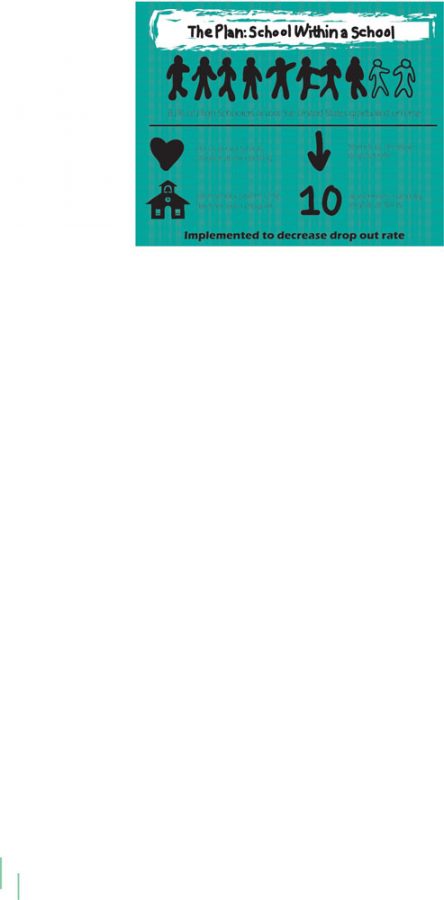art by Jaehyung Rhee
As Douglass High School nears its 100-year anniversary, CPS is considering a new way to offer an alternative academic experience to its students. While the new plans are not related to Douglass’ age, they do entail new facilities in each of the three high schools. The facilities would be a ‘school within a school,’ according to the district administrators who are considering implementing the program. The plan has been on the table for CPS since May of 2015.
“Each building would have its own program to serve the needs of their own students,” Dr. Lisa Nieuwenhuizen, one of the administrators who helped create the plan, said. “This is still in the planning stages but would likely focus on skill building in the core areas; teach social/emotional skill building, conflict resolution, etc.”
The intent of the ‘school within a school’, according to Nieuwenhuizen, is to reduce the amount of dropouts in CPS. To do this, the alternative education program would focus on improving social skills of students and their scholastic commitment while attempting to decrease the time spent in ISS by these students. The program is geared to students who have shown the warning signs of dropping out, such as poor grades and unsatisfactory commitment to school.
“It might definitely be a slow start but I think that maybe once kids realize this program is available at [RBHS]they might make themselves more known that they are struggling or that they have these risk factors at home or either at school,” Civics teacher Kelley Wittenborn said. “If we had a school within a school’ or specialty programs within [RBHS] it might benefit students who feel like they don’t have a place.”
For these students screening has already started in the district. When these students are identified, the schools consider what level of intervention these kids require to help them get back on track for graduation. If the students are determined to be at high risk of dropping out, they would be eligible for the ‘school within a school.’ At RBHS there are only 10 students who meet the qualifications for being at high risk for dropping out, according to the plans official proposal.
“I feel like if there was extra attention funneled to them in those aspects then those ten people would be able to have the help they need without trying to funnel all of these resources into something that wouldn’t be all of that effective,” junior Ian Koopman said. “It could be a lot more effective for students who are getting into ISS and suspension and stuff like that all of the time instead of taking them out of the classroom.”
Koopman sees that the program could be helpful for some RBHS students, and he agrees with Wittenborn that the alternative school could be a useful niche for some students. Koopman noted that this would especially be useful for lower achieving students in RBHS’ competitive academic atmosphere. To create this safe haven, the program needs more than administrators: it needs its teachers. According to Wittenborn, these teachers would need training above and beyond the norm.
“So much of what you teach in a “regular” classroom it, isn’t really applicable or isn’t desired for some of these students that are at a high risk for dropout,” Wittenborn said. “I think a lot of teachers would just need more training and support from administration and encouragement. We would definitely have to diversify and how they look and how they operate.”
Categories:
Alternative education program to assist failing students
January 2, 2016
0
More to Discover













































































